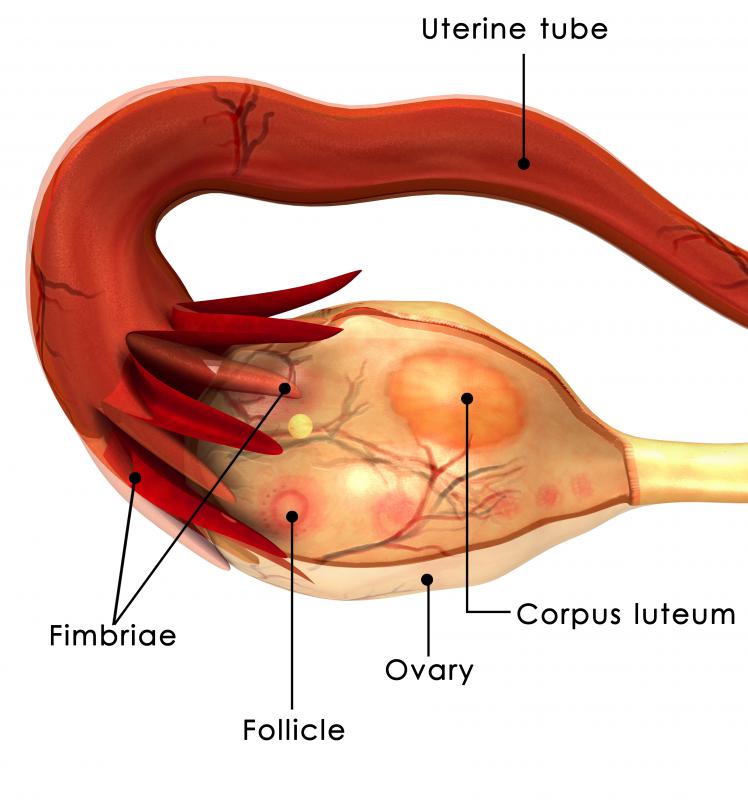At WiseGEEK, we're committed to delivering accurate, trustworthy information. Our expert-authored content is rigorously fact-checked and sourced from credible authorities. Discover how we uphold the highest standards in providing you with reliable knowledge.
What is the Corpus Luteum?
During ovulation, a mature egg is released from a follicle to be fertilized. The remains of the follicle after rupture is referred to as the corpus luteum, which means "yellow body" and is so called because it is yellowish in color. Complications related to this structure include cysts and progesterone deficiency.
A woman's menstrual cycle typically lasts about four weeks, and it is divided into two phases. Each cycle begins with bleeding, termed the menstrual period. The follicular phase begins with the first day of menstrual bleeding and ends with ovulation. After the follicular phase, the luteal phase begins at ovulation and lasts until the corpus luteum dies, causing bleeding to resume.

Progesterone hormone is produced by the corpus luteum, causing the uterine lining to thicken. If pregnancy occurs, the placenta takes over the production of progesterone around the eighth week. The follicle dies after 12 to 16 days if a pregnancy does not occur, and the uterine lining is shed.
The follicular phase starts when follicle-simulating hormone (FSH) is produced by the anterior pituitary gland. FSH causes the maturation of one egg-containing follicle, which are contained in the ovaries. Once the follicle and egg are mature, luteinizing hormone is released by the anterior pituitary gland and triggers release of the egg.

The production of progesterone is essential to sustain a pregnancy. In some women, a sufficient amount of progesterone is not produced by the corpus luteum, and the uterine lining is shed, resulting in miscarriage. Women who have suffered multiple miscarriages may have this deficiency, and they must receive supplemental progesterone to sustain the pregnancy until the placenta takes over production in the eighth to tenth week.

If this structure becomes sealed and fills with fluid, it is called a corpus luteum cyst. These cysts usually do not cause symptoms unless they grow quite large, in which case they may cause abdominal or pelvic pain and should be surgically removed. Particularly large cysts can cause ovarian torsion, which is a medical emergency. Cysts of any size may rupture, causing intense pain and some internal bleeding. Most, however, shrink on their own with no ill effects.

Cysts can also occur during pregnancy, but they pose no threat of miscarriage. Pain or tenderness can occur, but usually these cysts are discovered during a routine ultrasound. Sexual activity can cause cysts to rupture, so pelvic rest will be prescribed until the cyst has resolved. They can occasionally result in ovarian cancer.
AS FEATURED ON:
AS FEATURED ON:


















Discuss this Article
Post your comments